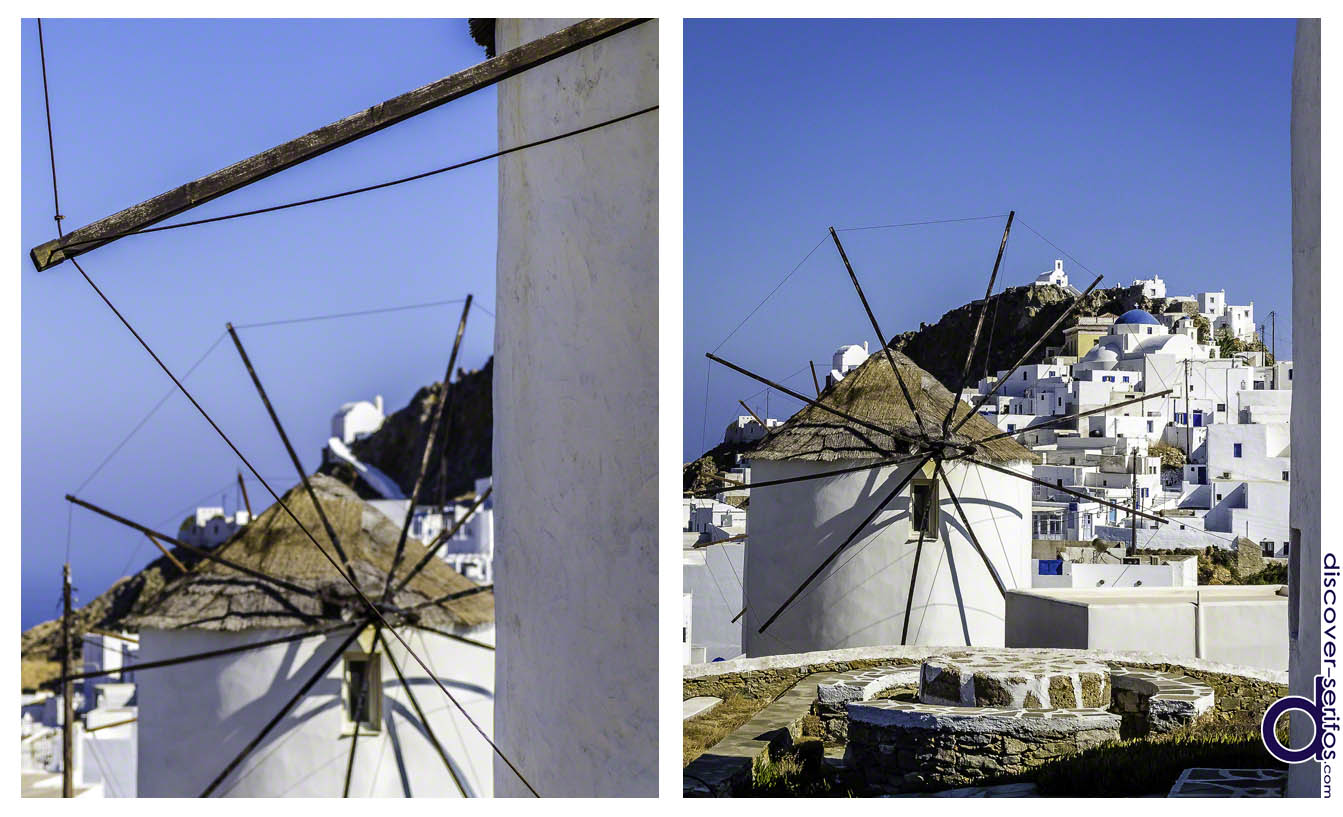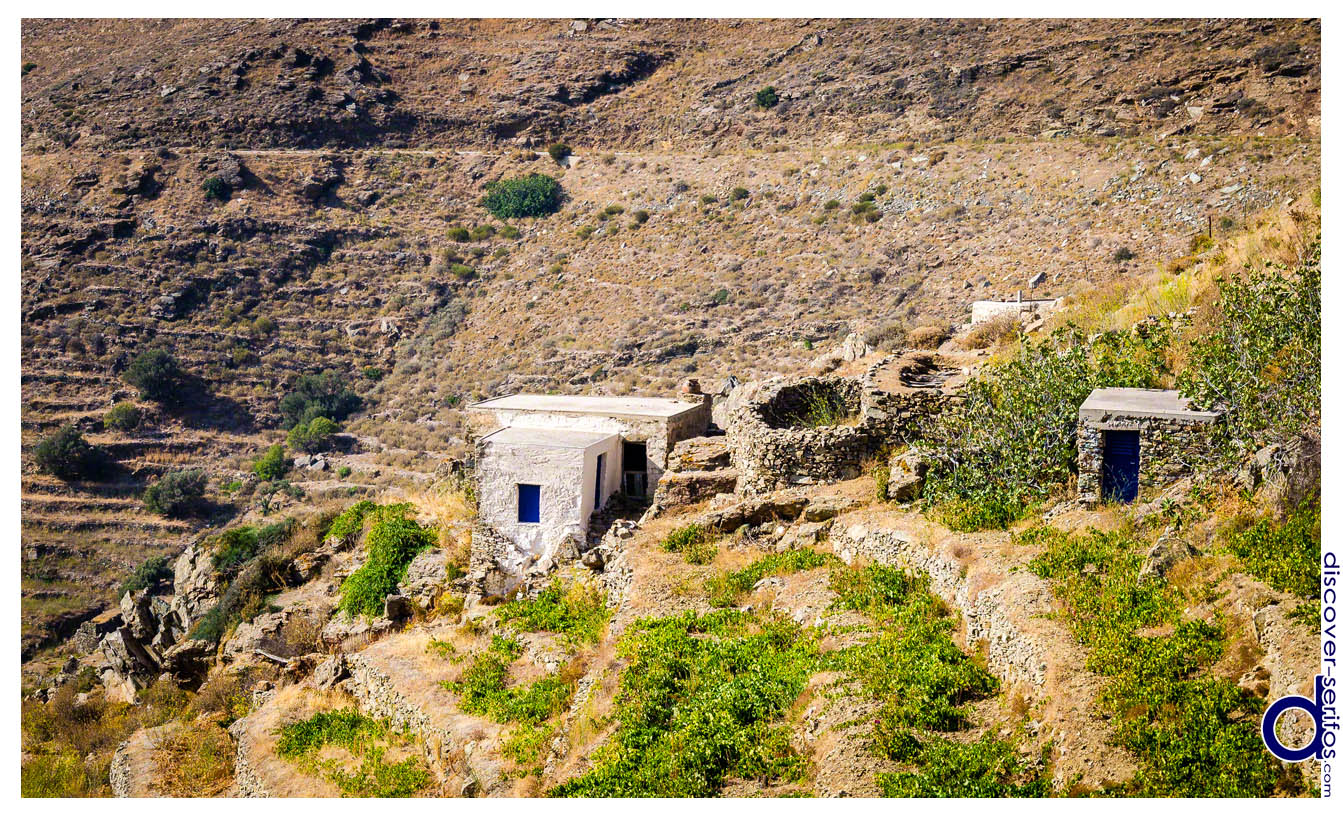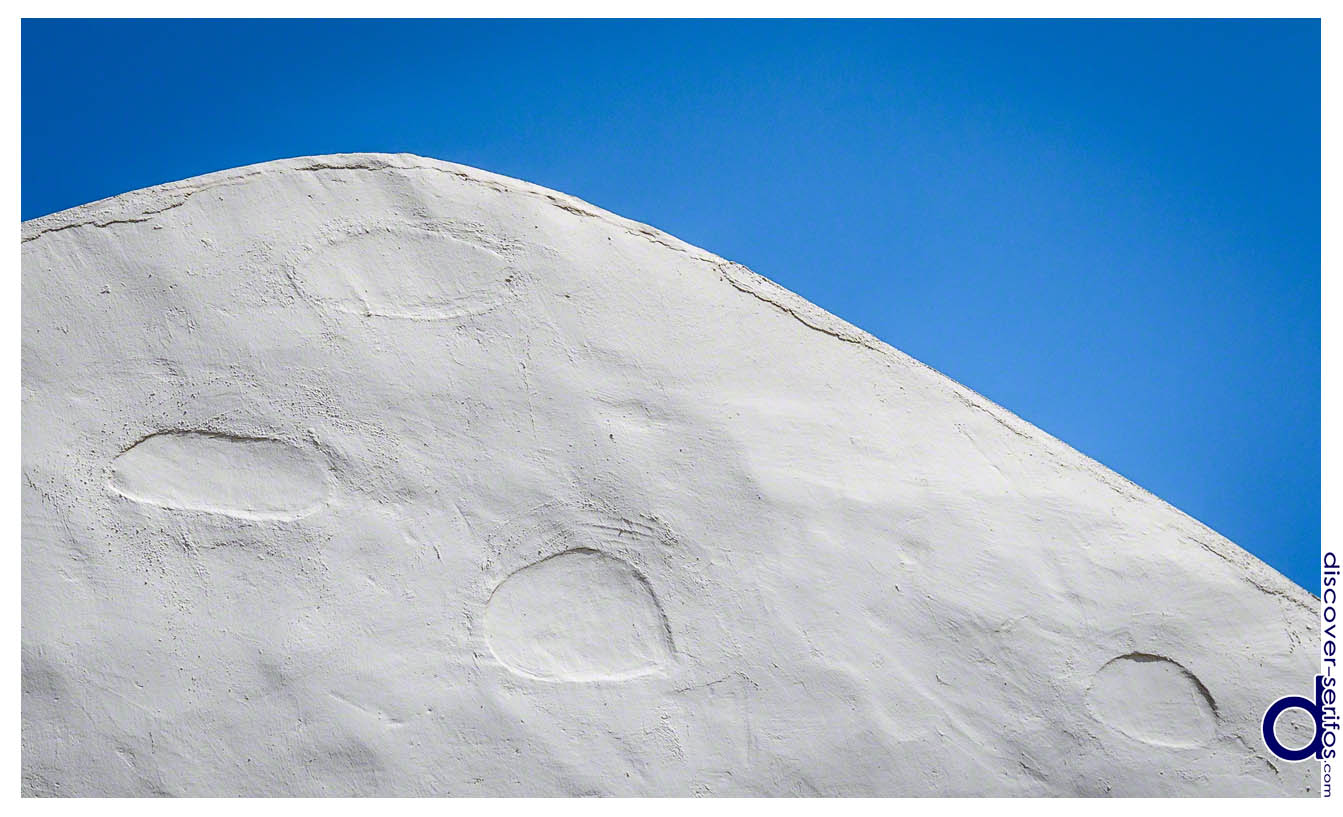
Architecture
The islands of Cyclades are characterized by a traditional minimal but daring architecture, which Serifos respects and maintains throughout the years.
Whitewashed houses, with wooden windows and doors, usually in shades of blue, and flat rooftops, rarely covered with tile, adorn the villages of the island, the mountainsides and the seaside.
The buildings are relatively small, with one or two floors, thick walls and small openings, adjusted to the terrain’s slope and placed in the most convenient orientation, so as to be protected from the strong wings.
The defensive nature of the Cycladic architecture, due to the frequent pirate attacks a few decades ago, resulted to the development of villages away from the sea, in more prominent and much safer positions, while the Chora of Serifos has a clearly “castle-like” configuration.
Amphitheatrically built, with the Castle supervising Livadi and the surrounding shores, the top of Chora captures in detail the form of a medieval fortified settlement. Houses built attached to one another, creating a powerful protective cordon, with a hidden complex of narrow, cobblestone streets – a form of labyrinth that invites you to get lost in its beauty.
This dense build style extends beyond the loggias, i.e. the entrances of the old Castle that are still preserved, forming the districts of Ano and Kato Chora.
A similar fortified design one can also observe in the Taxiarches Monastery, an impressive castle-like monastery on the north part of the island. It is characterized by its fortress form, with tall surrounding walls and a single entrance, almost 4 meters (13 feet) above the ground, so that both the monks and the civilians would be protected during raids.
The Monastery, as well as the dozens of churches all around the island, evidence the deep religious faith of the Serifians, and the Greeks in general.
In the area of Koutalas and Megalo Livadi, on the southwest part of the island, stand remnants of warehouses and miners’ residencies, ore loading bridges, wagons and machinery, silent witnesses of Serifos’s past.
In Mega Livadi, on the one side of the beach, there also stands the old two-floor Administration building of the mining company, which is dating back to the early 1890s. Along with the Town Hall in the square of Ano Chora, where the municipality of Serifos is housed, built in 1908, they constitute two very important neo-classical buildings of Ernst Ziller’s architectural style.
From a genuine Cycladic island, such as Serifos, what could not be missing is the windmills. White, three-floor, built out of stone, bearing a wooden mechanism, they took full advantage of the Aegean winds. From the almost twenty windmills, most of them are in ruins today, apart from three that have been renovated, on the backbone of Chora.
The countryside of Serifos is no different from the other Cycladic islands. Fields separated by dry stone walls, traditional terraces for the expansion of the few croplands and scattered old stone structures, such as the “katikies” (/kαti’kiεs/, i.e. farmhouses), the “mitata” (/mi’tαtα/, i.e. the shepherds’ shelters), the “krasokelia” (/krαsokε’liα/, i.e. wine cellars) and the “peristeriones” (/pεristε’rionεs/, i.e. pigeon houses) complement the landscape.
The katikies (or farmhouses) used to house the farmers for as long as the field works took place, while they were also used as warehouses.
The mitata, quite small as well, served the farmers’ or shepherds’ needs and were often surrounded by paddock. They were airy and had plenty of storeroom, a fireplace and all the necessary equipment for dairy production.
The krasokelia (or wine cellars), taller and wider buildings next to the vines, were used for the production and storage of wine.
More complex buildings were the peristeriones (or pigeon houses) that manage to combine functionality with aesthetics. They were made of stone, often whitewashed on the outside, and were used for breeding pigeons, a practice that was probably spread to the people of Cyclades by the Venetians, in the early 11th century. They are built in places that are protected from the winds and have openings on their front, for the entry and exit of the pigeons. These openings were quite often created by the elaborate placement of stone slabs, forming geometric shapes and symmetrical designs.







 facebook
facebook pinterest
pinterest instagram
instagram twitter
twitter